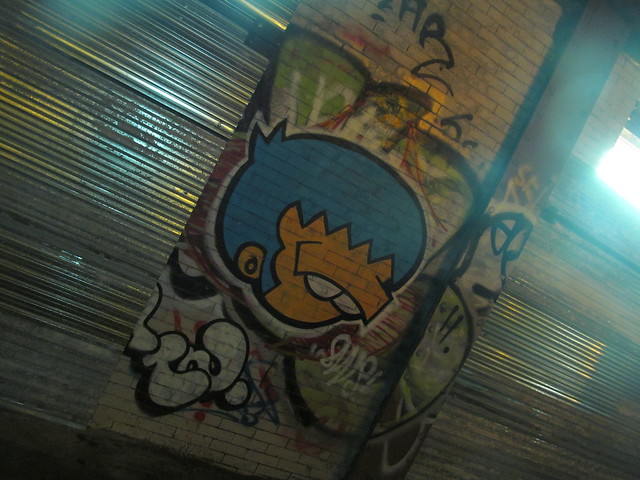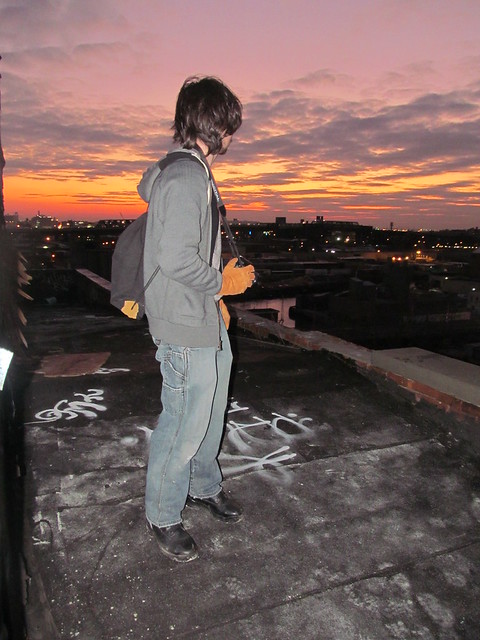Cleared of your messy remnants which have been littered, strewn across the ground, the workers have not yet peeled off your layers of dirt, grime, graffiti and history.
Looming in the distance, massive, visible from the bridge, inviting, beckoning, tempting.
We spent a good while circling the building searching for an entry before finally giving in and constructing our own. Though we didn't know each other, we both had the same goal in mind. This is what led to our most sketchy entry point ever. We began stacking heavy concrete blocks (it took two people to lift one of those gray blocks), and using these blocks as a boost, climbed up a utility cable hanging out of the side of the second floor window.
After this, we found a rope and tied it around the windowsill (which was surprisingly sturdy for a building that had been abandoned for so long), knotted it, and climbed up and in.
The Batcave is also known by a less alluring (and more official) name: The Rapid Transit Central Power House. This property used to power trains. By its current state, being completely cleared out and under renovation, I couldn't discern its original purpose. Back in the day, its boilers burned coal to provide power to trains, however, when this technology became outdated the plant became abandoned.
During a period of time in the early 2000s, a slew of squatters claimed their residence in this space, and hypodermic needles had piled up until the squatters were kicked out in 2006. Previous intrusions by others revealed random scraps of litter which would inform visitors that this was a person's hideout; now it is being emptied, replaced with cinderblocks, steel pillars and electrical wires.
















No comments:
Post a Comment